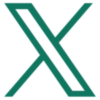EPA Proposes First Greenhouse Gas Emissions Rules for Power Plants

 Why you can trust us
Why you can trust us
Founded in 2005 as an Ohio-based environmental newspaper, EcoWatch is a digital platform dedicated to publishing quality, science-based content on environmental issues, causes, and solutions.
The U.S. Environmental Protection Agency (EPA) has released a wide-ranging new proposal for limits on greenhouse gas emissions from coal– and gas-fired power plants. If finalized, the new rule will be the first time the federal government has restricted carbon dioxide emissions from existing power plants, which generate about a quarter of the country’s emissions.
Scientists and environmental groups have long agreed such measures are needed to slow global warming, while states that produce the most fossil fuels say they overextend the government’s authority and could disrupt the electric grid, reported Reuters. The new rule would mean power plants would need to invest billions in new carbon capture and storage (CCS) equipment, add ultra-clean hydrogen or risk shut-down.
“EPA’s proposal relies on proven, readily available technologies to limit carbon pollution and seizes the momentum already underway in the power sector to move toward a cleaner future,” Administrator Michael Regan said in a statement, as Reuters reported.
White House National Climate Advisor Ali Zaidi said the new proposal will help the country to stay on track to achieve a carbon-free power sector by 2035.
“In a strong and vigorous way this reinforces our trajectory in a critical sector of the economy — in the power sector — and we are moving even faster and with greater certainty in the direction of unlocking the economic upside and the public health gains associated with meeting the president’s climate targets,” Zaidi told reporters yesterday, as reported by The Hill.
The standards set by the new rule would drive power companies to either use low-emissions fuels like hydrogen alongside fossil fuels or catch carbon dioxide as it is released to prevent it from reaching the atmosphere by installing CCS equipment.
EPA projections say the proposal would reduce coal plant emissions by 617 million tonnes from 2028 to 2042, which is equal to yearly emissions reductions of 137 million passenger vehicles, Reuters reported.
It is predicted that some coal plants may choose to shut down rather than adhere to the new requirements.
“We will see some coal retirements, but the way this program is designed, this is really a decision that will be made company-by-company and state-by-state,” Regan said, as reported by The Hill. “It gives a ton of flexibility so that the power sector can make individual decisions based on available technology and the resources that they want to expend.”
Regan added that the impact on electricity costs is expected to be “negligible,” with a two percent increase in 2030, falling to 0.24 percent in 2035 and 0.08 percent in 2040.
Currently, about 20 percent of electricity in the U.S. is provided by coal, while natural gas provides about 40 percent, The Associated Press reported. Renewables like solar, wind and hydropower, along with nuclear energy, provide the rest.
“It’s a way for (fossil fuel) plants to operate in a decarbonized world,” said Jay Duffy, a lawyer for the Boston-based Clean Air Task Force, before the proposed new rule was announced, as reported by The Associated Press.
The new rule is expected to take about a year to be finalized, and a public comment period is required before it can take effect, Reuters reported. The public comments are required to be reflected in the final rule.
Some climate activists did not think the rule went far enough.
“We look forward to engaging in the comment process to ensure these standards swiftly achieve the necessary emissions reductions and that they cover more sources responsible for power sector carbon pollution — more gas power plants, in particular,” Lena Moffitt, executive director of Evergreen Action, said in a written statement, according to The Hill. Moffitt added that the rule is an “important step to tackle power sector climate pollution head-on.”
Last year, the Supreme Court ruled the EPA cannot impose a system-wide transition to renewable energy from fossil fuels, but does have the authority to regulate energy plants by setting on-site standards for technology, reported Reuters.
“In light of what the Supreme Court ruled, they’re not swinging for a home run,” said Richard Lazarus, an environmental law professor at Harvard Law School, as The New York Times reported. “They’re swinging for a hit.”
The EPA anticipates climate and health benefits of the new proposal to equal about $85 billion, with a cost to the power industry of more than $10 billion, reported Reuters.
According to the EPA, the Inflation Reduction Act offers billions in tax credits and incentives to lower the costs of the transition to hydrogen power and CCS.
The new rule will require natural gas plants to install CCS equipment capable of removing 90 percent of carbon emissions by 2035, or to use 30 percent hydrogen power by 2032 and 96 percent hydrogen by 2038.
The standards for backup power generation by gas-fired “peaker plants” would be less strict.
The planned lifespans of existing coal plants will be considered by the EPA, with those running beyond 2040 being required to use CCS beginning in 2030. Those closing down between 2035 and 2040 would be required to run on 40 percent gas by 2030.
Environmental groups said the new proposal had been carefully crafted to withstand legal challenges.
“After two failed attempts to regulate the power sector’s tremendous carbon pollution load, EPA finally gets it just right with this proposal,” said Jay Duffy, litigation director for the Clean Air Task Force, as Reuters reported.
Subscribe to get exclusive updates in our daily newsletter!
By signing up, you agree to the Terms of Use and Privacy Policy & to receive electronic communications from EcoWatch Media Group, which may include marketing promotions, advertisements and sponsored content.

 233k
233k  41k
41k  Subscribe
Subscribe 




